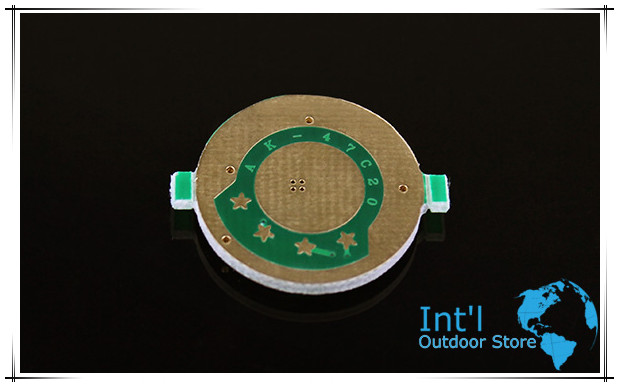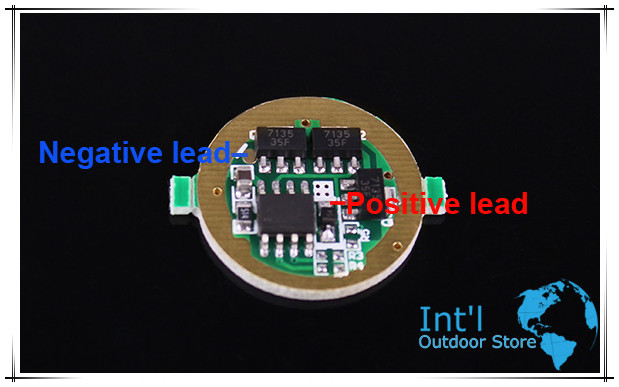I have soldered drivers before, just not this type. Four questions.


1. Is the “plus” (positive) solder point the little blob of solder in the picture …… OR is it really the little white square with holes in it? I’m thinking the little white square as the holes seem to go through the PCB and end up on the large positive (plus) solder point on the reverse side of the PCB (where the spring will go). But I’m probably wrong. They design these chips so that the smallest possible area is the assigned solder point, which would make it that eentsy tiny blob of solder, of course.
intl-outdoor says solder the stars produces different mode selections. They say:
1st Star : Low (10) - High (100)
2nd Star: Low (5) - Medium (30) - High (100%)
3rd Star : Low (5) - High (100) - Strobe
4th Star : Low (5) - Medium (30) - High (100%) - Strobe – SOS
2. And which is the “first” star: The first one on the left or the first one on the right?
3. I connect the star with a solder “blob” to the outside (neg) circular solder point to activate whatever mode group I want? Or is it the inside (plus) solder point?
Reminds of ye olde PC days when motherboard manufacturers gave you just enough info to have to guess and possibly ruin a $200 m-board. Approximately 25 more words and the instructions would have been bulletproof clear.
4. FINALLY: With this driver, will a U2, U3 or T6 emitter make any noticeable difference in brightness, or will the T6 be about the same as the U2 or U3?
As always, thanks to everyone for their help. Yes, I could have asked intl-outdoor, but I figured BLFers might have some other jewels of wisdom about this driver.


